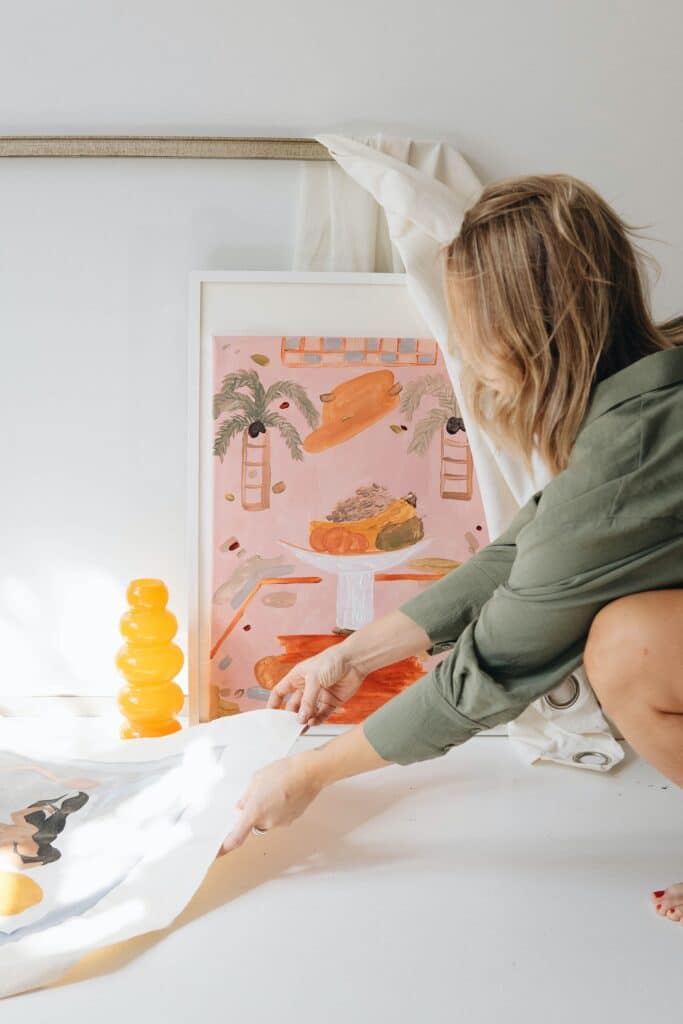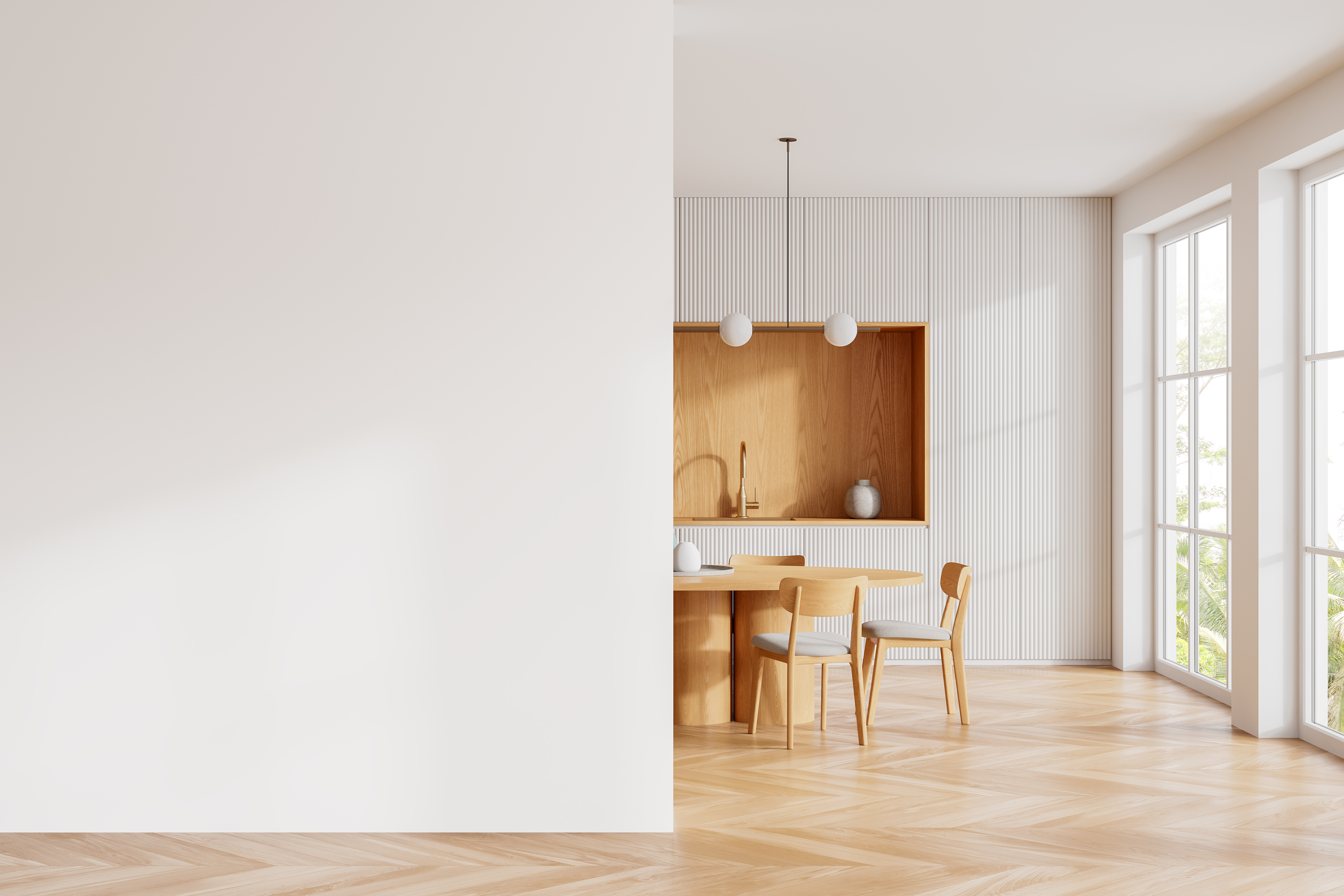If you’ve never tried to set up shop at a local art market and sell your work, you might be missing out on a great way to earn some supplemental income from your creative work, as well as make new connections and spread awareness of your brand.
Before we dive further, it’s important to note that not every art market will be a good fit for your work—and that’s okay! There’s an art market for every niche, community, and holiday out there, so it’s more important to take the time to figure out which art markets are right for you rather than jumping on the first big market you see. Since there are so many, it can be difficult to narrow down the list, so you might want to focus on a few key considerations.
Choosing your prints
The amount of work you bring and which prints you choose will depend on the market you attend. In general, you likely won’t be bringing prints of every piece of art in your portfolio. Instead, you’ll want to tailor your prints in order to get the best return on your investment.
Understanding your target audience
Depending on the art market you attend, you’ll likely bring with you a tailored set of prints based on who is most likely to attend. For example, if you’re attending a holiday market, you might want to bring holiday-themed prints, or higher quality prints with attractive packaging that would make good holiday gifts. If you’re attending a pride art market, prints with a more inclusive, queer focus will do well.
Not every type of work sells well at every type of market, so keep in mind who is attending—you likely wouldn’t want to show up at a comic convention selling nature work, or a community centre art market selling boudoir.
Quality and presentation matters
Some markets will demand higher quality prints than others, while some markets will demand more thought be put into the presentation of your work. Depending on the type of market you attend, it may be more or less necessary to focus on the quality of your prints.
As a general rule, if you are selling at a market that values limited edition, gallery-quality, or one-of-a-kind work, you will want to have your work professionally printed on high quality materials, or even sell original creations. It may also be necessary to frame and sign your work, and have proper packaging on hand to avoid any damage to the print.
If you are selling at a market that places an emphasis on high purchasing volume—think comic conventions, pride markets, and small artist-run markets—you’ll want to spend less on the overall material quality of your work. Batch printing and plastic sleeves will be more common here along with smaller print sizes, and framing will be far less common. You’ll want to have a higher volume of low to mid-cost prints, rather than very expensive limited editions.
Pricing your prints
Pricing can be a sticking point for a lot of creative, as well as prospective clients. Determining the correct balance between affordability and profitability will depend on what kind of print you’re selling and which market you are participating in.
To start, consider the overall cost required to create your prints. Consider the cost of printing, packaging, the time it took you to make the print, any promotional materials you’ll be packaging with it, and the overhead costs associated with attending the market. Determining these costs can be a great starting point for pricing, and can help you avoid falling into the trap of underpricing—and undervaluing—your work.
Beyond those costs, you’ll want to consider the types of work that will be sold by other artists at the market you are attending. Are small prints more popular than large prints? Does the market favour pricier, one-of-a-kind work? Are bulk discounts common? While your skill level and overhead costs play a factor, the regular going rates of other artists are also important.
To aid in researching, you may want to consider attending a few local art markets before settling on your pricing. This will ensure you are more prepared when the time comes to participate in your own market.

At the art market
So you’ve figured out your pricing, you know how much work to bring with you, and you’re getting to the final steps of preparation. But now comes the most difficult part—figuring out how you’ll present and promote yourself at the art market.
Marketing and promotion
Making the sale is only half of the work required for a successful market display. The majority of people who visit your booth will likely move on without purchasing. In a market with many booths, prospective customers can be picky with their cash. This can be discouraging for a first-time vendor, but it’s important to recognize that many visitors to art markets come to browse with the intention of purchasing at a later date.
For this reason, you’ll want to have some form of promotional materials with you. You may consider the following:
- Business cards
- Coupons
- Postcards and bookmarks
- Stickers
The above items are all small and relatively inexpensive to mass-produce. All of these items should have your social media or website on them, and will help prospective customers to find you after the market.
Setting up your booth
Once you’ve made it to the market, you should have a clear game plan of how you’ll set up your booth, taking into account things like location, display stands, and how you’ll handle transactions.
Booth location
With most markets, you’ll have two main options regarding your booth type and location—corner booths and regular booths. Most regular booths at markets and conventions will consist of one six-foot long table and chairs. A plain table skirt may or may not be included with your booth.
Corner booths can be a bit more diverse. They may include two six-foot long tables, or they may only include floor space, with the intention of letting you set up the space to be more interactive. Corner booths are also considered prime locations because they are more likely to attract customers, so keep in mind the price will reflect this.
Display stands
Verticality is important and often overlooked by first-time vendors. It is more likely than not that the sellers around you will have some sort of vertical structures to affix their work to. Showing up without similar structures can lead to your booth being overlooked by potential buyers.
When you’re first starting out at art markets, you likely won’t need anything fancy. Wire storage cubes consist of gridded wire squares that clip together to form cubes. These are great for market displays because they are light but sturdy, and can be built into custom configurations. You can hang prints, bookmarks, promotional materials, and other small items from wire storage cubes. They’re also easy to decorate!
Handling transactions
After doing all the tedious work setting up your booth, handling transactions is an easier step. You’ll want to make sure you have an easy way to log transactions, enough change on hand to process cash purchases, and a way to accept credit cards. You might want to look into a transaction processing service like Square or Stripe for this.
Engaging with customers
When engaging with customers, it’s important to remember that you want to be friendly and helpful, but not overly so. Most visitors at art markets are there to browse, and the last thing you’d want to do is scare away potential buyers by upselling too hard.
When working at an art market, a good rule of thumb to follow is to say hello, introduce yourself, and let potential buyers know that you’re there to help if they have any questions. If you notice potential buyers lingering or staring at a specific product, you can step in to offer more information.
Another important thing to consider is storytelling as part of your interactions with potential buyers. If a potential buyer is viewing one piece for a significant amount of time, or if they ask for more information, this is your opportunity to share a bit of insight into your vision as an artist and your creative process. This can generate more interest and investment in your work.
When buyers and potential buyers are leaving your booth, you may want to be proactive and offer a business card or other promotional material. This is a great way to manage customer retention and create lasting relationships.

After the market
The market is over, you’ve disassembled your displays, packed your things, and hauled everything home. By now, you’re likely exhausted and ready to sleep well into tomorrow. And once you’ve done so, it might be a good idea to review how the market went.
Art markets are a learning experience. Few people will do an outstanding job their first time, but everyone will learn something from it. Hopefully, after your first art market, you’ve learned quite a bit about what worked and what didn’t work, and how to improve for next time.
The first thing you’ll want to analyze are sales and expenses. It is important to look objectively at how well you did overall, including the effectiveness of your pricing, and volume of products sold. This can be scary, but it’s a necessary step in determining how to improve.
Once you’ve looked at your sales and calculated the net profit you made during the art market, it’s a good idea to check in and consider how things matched up to your expectations. Did you prepare the right things? Was there anything you missed? Did some things work differently than you expected? Maybe a particular piece sold really well while something you expected to sell well did poorly.
Whatever the case, reviewing your sales from an analytic and critical perspective will arm you with the knowledge needed to prepare more effectively the next time.
Art markets can be an overwhelming experience. In the end, they can also be a wonderful way to market your business, network within your creative community, and generate income in a short time span.
Remember, your first try will never be perfect! But we hope that whatever kind of market you choose to attend, you have a bit more knowledge now in knowing what sorts of things to consider.













